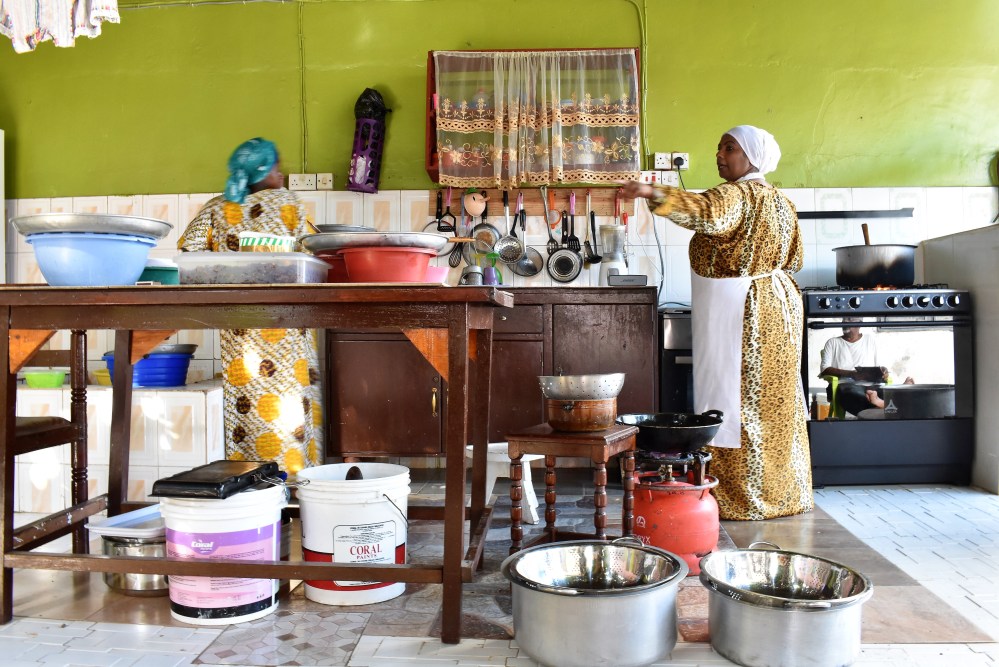
Husna Azzan is a great cook. I know this because I was lucky enough to stumble past her house one night and try her urojo, or Zanzibar mix, which her son Ahmed was selling to passers-by from a stall outside their house. After trying the urojo and talking to Ahmed about his mother’s cooking, I felt bold enough to tell him about this blog and ask him if I could meet his mum sometime. I take his number and promise I’ll be in touch when I pass back through Dar in a month’s time.
Wind on one month and I am desperately trying to remember Ahmed’s name in my phone contacts, luckily Cass comes to the rescue. After checking with Husna, Ahmed messages to let me know that Friday morning would be best as his mum will be cooking biryani as well as urojo. On Fridays the Indian communities of Zanzibar and Dar es Salaam like to eat biryani or pilau, a tradition that was originally brought over by the Pakistanis. Friday is a holy day and holiday for Muslims and biryani, with its colourful rice, unctuous meat and incredible aromas of cardamom, cinnamon and spices, is a showstopper dish, fitting for a holy day.

Within the compound shared by four generations of Azzans is a large open-air kitchen set up on a raised platform. A small island at the front is topped with tubs of spices, food colouring, ground ginger and garlic, yoghurt, tomatoes, onions and rice. Along the back wall is a huge sink large enough to bathe in, to the right, a cooker with a large vat of spiced meat on the boil and further storage for pots, pans and kitchen utensils run across the middle. Moving confidently across the kitchen ‘stage’ is Husna, youthful, elegant and smiley with a diamante on one of her teeth.
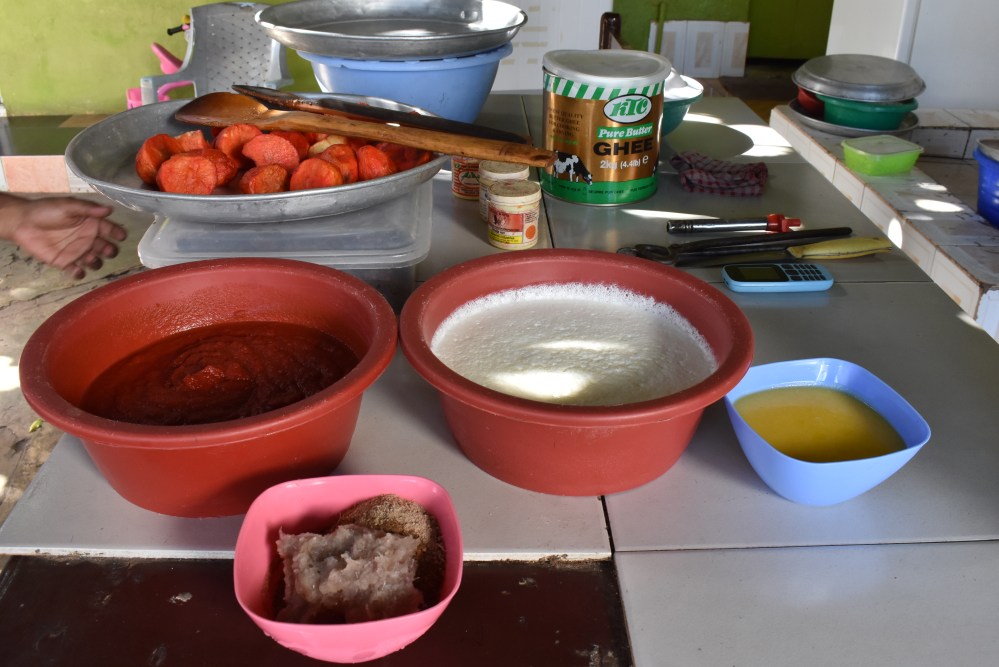

Sat under the shade of a large bonjo tree is Ahmed’s grandad Ally, the self-proclaimed patriarch of the family with more grandchildren than he can remember. As I sit with Ally, watching his daughter Husna cook biryani, Ally laments the chips and western junk food that ‘kids these days’ are eating. We talk about his job as the superintendent of Dar Es Salaam Port and his memories of the inaugural train journey from Dar es Salaam to Zambia, long enough ago to spot elephants and other wildlife from the windows as the train slowly wound its way through the bush.
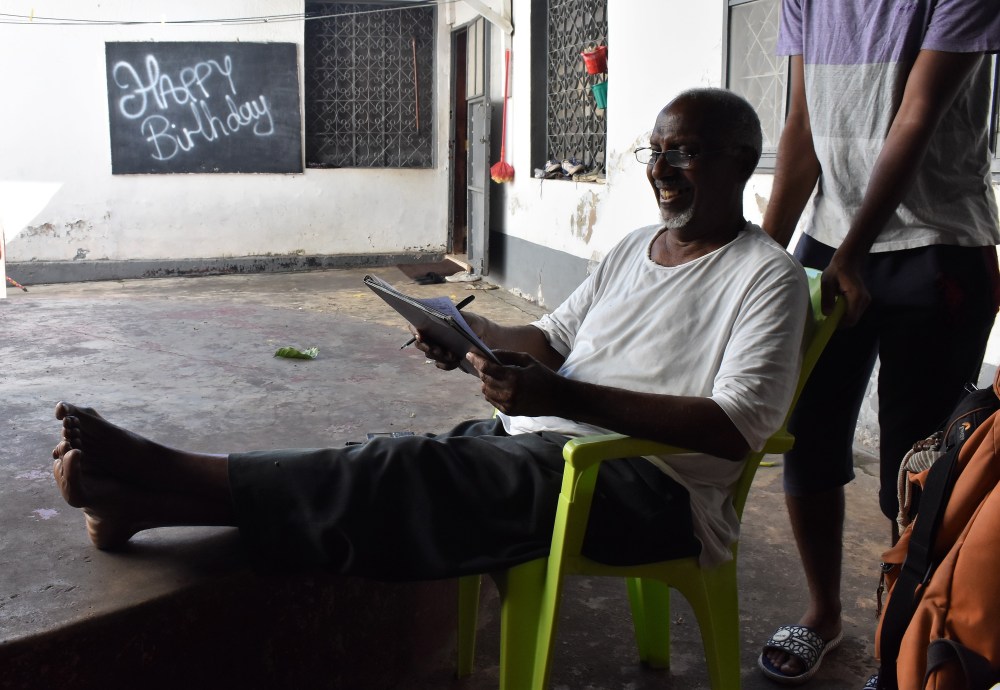
The rest of the kitchen is bustling with activity, house-staff (common in middle-class homes) help Husna with the cooking and washing or bring out at Ally’s request food for me to try – a homemade juice made from the fruit of the bonjo tree we are sat under, the Yemeni spiced millet bread he has every morning for breakfast, and the many types of homemade chilli and coconut sauces that we gobble up with freshly made bajia and kachori. At some point Ahmed’s sister comes in and henna’s my hand, her daughter cycling around the courtyard on a baby pink bicycle.

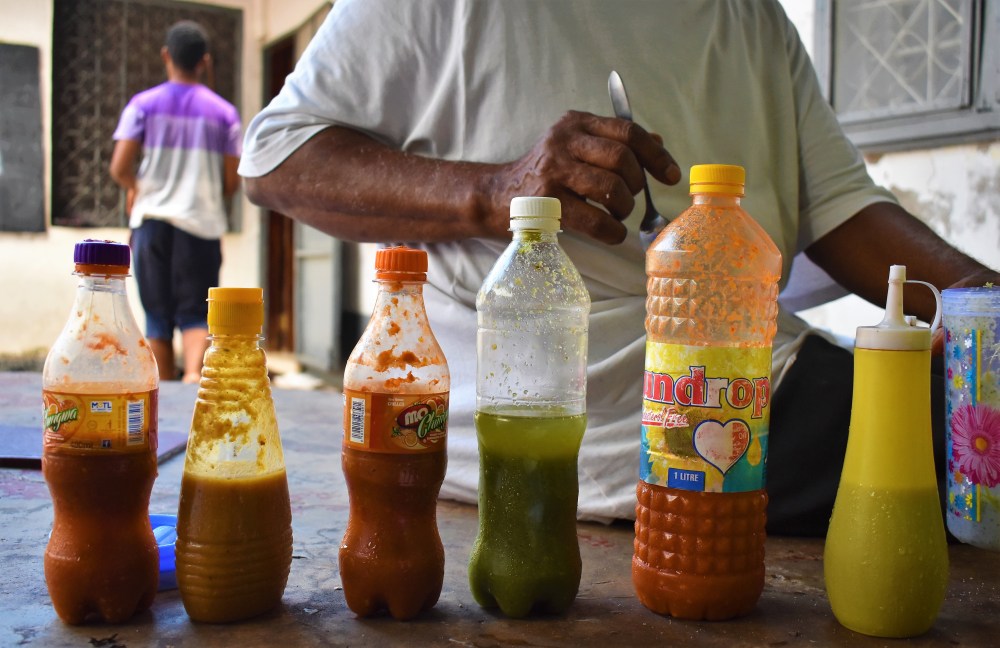
Throughout the morning Husna eagerly beckons me over to the stove, encouraging me to smell the aroma of the spices and meat cooking together or check for seasoning; you only need to see the smile on her face when she’s cooking to know that her food is going to taste delicious. Husna first decided to set up the urojo stall outside her house because she loved cooking so much, it was because of friends and family asking that she finally began to cook biryani on Fridays too.
Now, every Friday morning she cooks a huge pot of biryani before calling round neighbours to ask for their order. Ahmed then delivers the food round the neighbourhood after his Friday prayers. The biryani Husna shows me how to cook uses beef and potatoes, but she explains that you can do an equally tasty variation using chicken and eggs. Likewise, with the rice we add raisins, but you could also add cashews or almonds. Before cooking the meat Husna also covers it in blended papaya, as this apparently helps to keep the meat tender as it cooks.
Later that day Cass and I tuck into Husna’s biryani whilst on the Zambian bound train from Dar es Salaam, hopelessly looking for elephants out the window.

Husna’s biryani
Serves 25!!
Ingredients
4kg onions
4kg beef
Food colouring powder
4kg potatoes
400ml ghee
4tbsp ground cinnamon
4tbsp ground cardamom
4tbsp grated ginger
4tbsp grated garlic
1tbsp chopped chillis
3 X 400g tins of tomato puree
1.5 litres plain yoghurt
2-3 limes
Salt
4kg rice
50g raisins
1-2 tbsp sugar
Sunflower or vegetable oil
Method
Finely chop the onions and shallow fry in a large frying pan. Cook until the onions are a deep brown colour. Drain the onions and store in a large container until you are ready to cook the rest of the biryani mix. This can be done the day before.
Peel and half the potatoes. Cover with a couple of pinches of food colouring and gently toss the potatoes together so they are evenly coloured. Using the oil from the onions and a little more as necessary, fry potatoes in batches until they are almost cooked. Don’t cut the potatoes up too small.

Cut the beef up into medium sized chunks. Place in a large saucepan along with some grated ginger and garlic and cover with cold water. Bring to the boil then continue to cook on a medium-high heat for one hour.
Blend the yoghurt together to make sure it is evenly mixed and liquid like.
Begin to cook the rice by bringing a large pan of slightly salted water to the boil, then adding the rice along with a little oil to prevent the rice from sticking to the pan.
Place another pan on medium-high heat and add the ghee. When the ghee has melted fully add the cinnamon, garlic, ginger and cardamom and cook together for five minutes, stirring continuously. Next add the tomato paste, stirring everything together for a couple of minutes before adding in the blended yoghurt. Finally, stir the coloured potatoes to the pot.
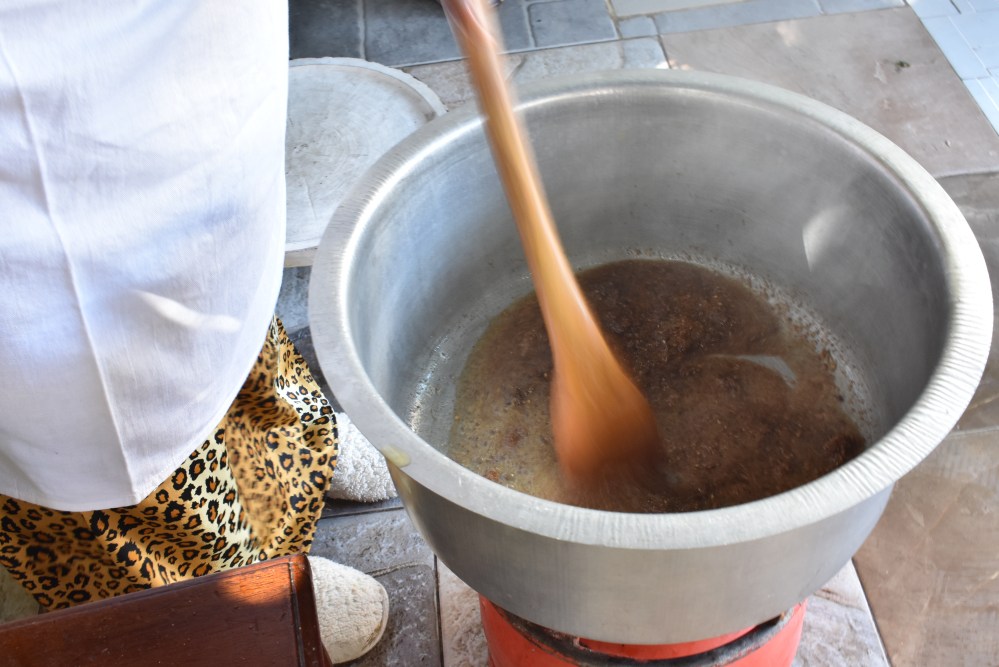
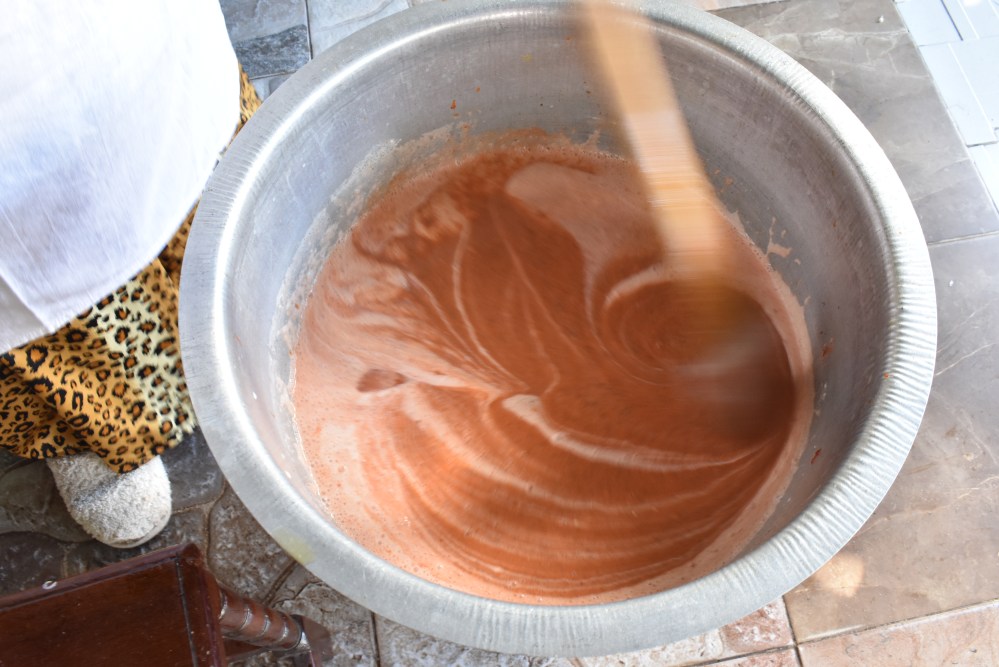
The mixture should be very red in colour, due to the coloured potatoes and the tomato puree. To give the sauce its deep brown colour you must next add the fried onions. Add the onions in batches, continuing to stir in between so that the onions can work their way into the sauce before the next load is added.

Drain the meat and add to the biryani sauce.
Once the rice is cooked, strain the water out and leave to one side.
Find an oven-proof pot large enough to hold the meat and rice, this may be the pot you used to make the biryani sauce. Place (or keep) the biryani sauce at the bottom of the pan, gently squashing down with a spatula to make sure it is flat and even. Cover the biryani with a layer of tin foil, pricking several holes in the foil. Heap the cooked rice on top of the foil then add several pinches of food colouring on top of that (don’t stir together just yet). Cover the rice with more foil, then add the lid of the cooking pot and place the whole dish back into the oven on a very low temperature for another 45 mins – 1 hour.
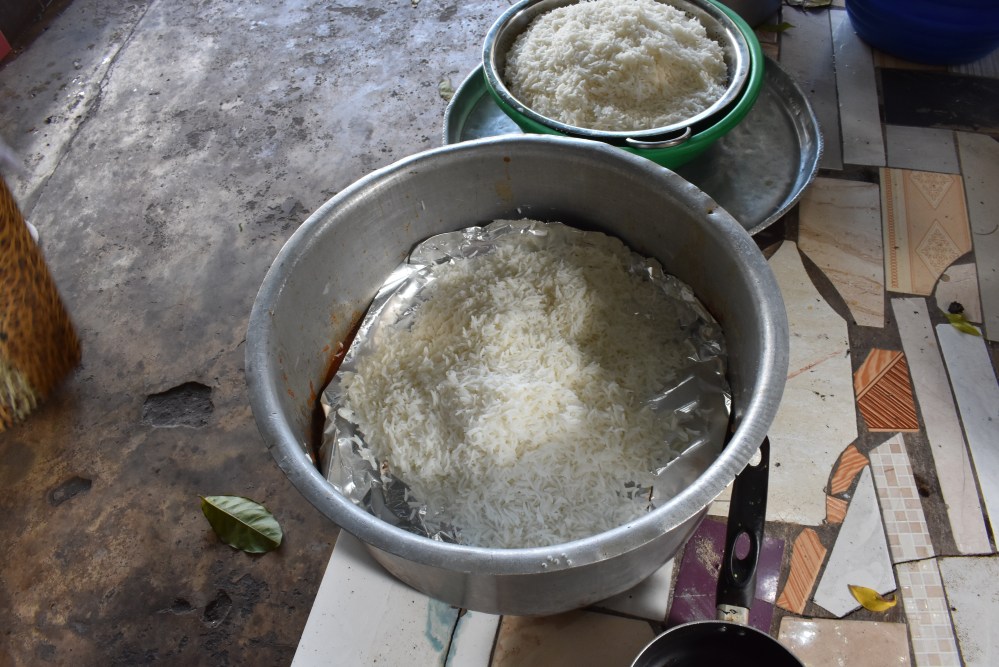
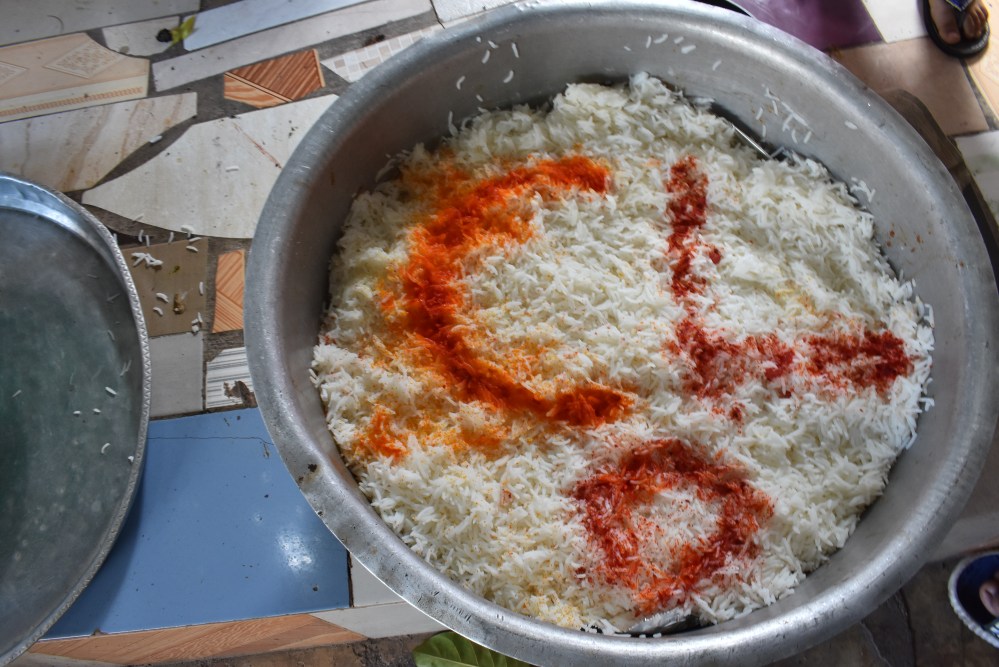
Finally, remove the rice and stir so that the coloured rice is spread throughout the dish.
Serve with rice on the side and the biryani sauce on top of the rice or to the side. Best enjoyed on Fridays.

Beautiful read! Omg the Pakistani influence in Dar is amazing! I was eating Tali non stop! Love love love the images, inspiring me to keep taking more
LikeLike
What a sensation for the senses this read was- sounds amazing
LikeLike